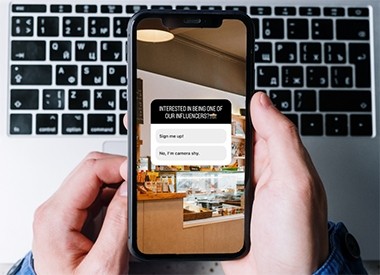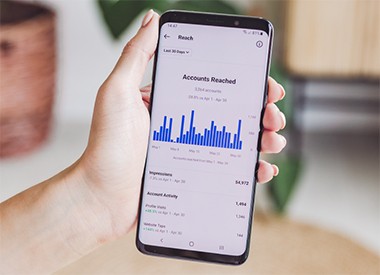Have you ever had a family member or friend rave about a product, service or experience that influenced you to buy it yourself? Influencer marketing is essentially that, but on social media. Someone with a community of followers that trust their opinion promotes a brand's product through their social media content – often in creative and engaging ways.
Because of this trust and authenticity, influencer marketing, when done right, is a top way to promote small businesses. But not just any influencer or any content will do, which is why our marketing team created this dos and don’ts cheat sheet. Check it out!
DO leverage local influencers.
You can almost always get more dynamic content and relationships out of local influencers for a variety of reasons. First off, our communities take pride in where they’re from. If an influencer lives where your business is based, customers can find them more relatable and even more trustworthy. Secondly, local influencers will be more accessible. You have better odds of getting them to in-store events and filming collab pieces together, plus you can get them in front of products that may be impossible to send in the mail. Of course, you want to be sure they have some sort of connection to your industry to be credible.
DON'T hire an influencer solely based on their number of followers.
A large number of followers doesn’t mean a large number of sales. Nano influencers (1,000–10,000 followers) and micro-influencers (10,000–100,000 followers) are typically the sweet spot for small businesses. When finding the right fit, focus on an influencer's audience. What do they find relevant? Engagement on posts, such as likes, comments, saves and shares is way more important than follower count.

DO harness your own followers to find the perfect fit.
You likely see influencers all over social media, but it can feel impossible to get started or figure out where to find someone fit to rep your brand. People who already enjoy your brand will not only feel more authentic, but they’ll likely be more passionate about collaborating with you. Start by going through your followers and tagged posts to find someone. You can even get your followers involved by posting a sticker question or poll asking for influencer recommendations.
DO give your influencers creative freedom.
You are hiring an influencer to promote your product on THEIR platforms. They have a style that their followers recognize. A lot of followers watch their influencer’s content daily, so you better believe they will be able to pick up on content that feels forced. Influencers are actually changing and evolving the video space with their unconventional thinking and creativity – let them have the space they need to make the best kind of authentic content possible.
DO lean into free product as an incentive.
Sending free products to influencers is a great way to supplement your overall payment. A bit of both is ideal, but if you’re looking for a small one-time influencer project and are on a low budget, you can leverage free products and/or services. You can also promote the influencer on your own platforms by making a post promoting their general blog website or adding their new book to your shop.
DON'T go in without a plan.
Though creative freedom is crucial, you still need to communicate your expectations. Consider giving influencers your product or services prior to promoting them. This will give them time to become familiar and confident in what they’re speaking about. Provide ground rules for what you want to promote, how much content you’re expecting and the kind of content you’re looking for them to post. Do you want giveaways, unboxings, casual product placements? It’s crucial to make sure your influencer marketing aligns with your overall marketing plan. Check out this influencer marketing strategy for inspiration on creating a plan.

DON'T take advantage of free product as payment.
Influencer marketing is a true art that takes time and creativity. It’s one thing to pay in product for a one-time small piece of content like we mentioned above, but good influencer marketing relationships are made when you value their work and reflect that through cash compensation.
Inviting influencers to be part of your other marketing efforts like a photo shoot, having check-in meetings at least once a season, sending them products on their birthday and keeping tabs on their family life are all great ways to keep a healthy relationship.
DO leverage current customers as influencers.
As a bonus “Do,” we wanted to also touch on some influencer marketing that is free, easy and often overlooked. We’re talking about customer reviews and referrals. 90 percent of consumers think reviews are more important than information from a salesperson, but it takes an average of 10 reviews to get a consumer to commit to a business. Consider offering a small discount to customers who leave a review or give a referral. This is great to do at the start of every season to ensure reviews stay fresh and relevant.

DO measure your results.
Just like your other marketing efforts, it’s important to follow how your influencer marketing is performing. You can do this by keeping track of how many followers you’ve gained, giving influencers a special discount code for their followers to use and recording how many codes were inputted and by adding your influencer's posts to your own social media management platform to easily track impressions, engagements and more.
Finding an influencer doesn’t mean DMing Rihanna to promote your product (although it never hurts to ask). We hope this blog has helped you realize that influencer relationships are not only appropriate for small businesses, but they are one of the most impactful and achievable marketing tactics you can be doing right now. Everything’s worth trying at least once, right?
